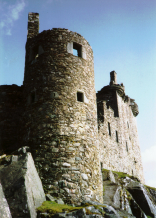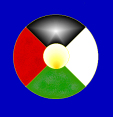The Erskines 1613-14
text from Scotland's Wicked Witches
More info on House of Dun from thecastlesofscotland.co.uk
The following case involves a dispute over property, namely the wealthy barony and estate of Dun, which is located three miles north-west of Montrose in Angus in the east of Scotland. Although the case did include witchcraft, this crime can be seen simply as a straight case of murder by poisoning.
The lands of Dun were long held by the Erskines, the property having come to them in 1375, and they had a castle, although this was demolished when the fine House of Dun, a classical mansion, was built in 1730 by the architect William Adam.
A prominent member of the Erskines was John, a scholar and reformer in the time of Mary, Queen of Scots, but branches of the family came into conflict early in the seventeenth century, a conflict which led to witchcraft, poisoning, murder and execution.
When John Erskine, the ninth laird of Dun, died in 1610 without a son, his nephew, also called John, stood to inherit the property and title.
John and his brother Alexander were boys at the time and were put into the care and tutelage of a relative, another John Erskine, this John being the minister of Ceres. Robert, their uncle and the brother of the ninth laird, had hoped to gain that position for himself, as he would have benefited financially and he would also have had the heir to the estate in his power.
In truth, he was angry and vengeful that he had been passed over for a more distant relation.
Robert plotted with his three sisters (the boy’s aunts) – Isobel, Annas and Helen – to remove the obstacle to him inheriting Dun; presumably the sisters would have benefited from Robert’s generosity.
Firstly they went to a man, David Blewhouse, offering him the princely sum of five hundred silver merks and some land to help in their scheme, but he refused. Then two of the sisters went to a local woman, Janet Irving, who resided at Muiralehouse and who had a reputation for being a witch. Janet promised that she could give them herbs which she assured the conspirators would solve their problem.
The herbs were soaked in ale and the poisoned drink was then given to the two lads at a house in Montrose.
Both the boys immediately fell violently ill and started terrible vomiting. The heir John Erskine suffered an appalling illness: his skin went black, his inner parts were consumed and he wasted away in agony until his death. It is said that before he finally he expired, he said, perhaps rather articulately for someone in their death throes: ‘Woe is me, that ever I had right of succession to my lands or living! For had I been born some poor cottar’s son, I had not been so treated, nor wicked practices had plotted against me for my lands!’
Alexander, the younger lad, was also very sick and poorly but somehow he survived.
Foul play was, of course suspected, and in 1613 Robert Erskine was interrogated by the Privy Council and confessed to his part in the lads’ poisoning, implicating his three sisters, as well as Janet Irving and the others involved.
After a trial he was found guilty and was executed by beheading at the Mercat Cross in Edinburgh.
The following year his sisters were also tried and were also found guilty. Isobel and Annas were beheaded in Edinburgh, but Helen’s part seems to have been less significant and, also because she showed much remorse, her sentence was commuted to banishment, on pain of death if she ever returned to mainland Scotland (she went to Orkney).
Janet Irving was tried, and was probably executed although her case appears to have been handled locally so there are no detailed records.
In truth, although the Erskines were accused of consulting with a witch, this was a case of murder by poisoning for profit and that was enough in itself to get them executed, which is why they were not killed in the normal way for a witch by throttling and burning. It is not clear which poison Janet Irving gave to Robert Erskine and his sisters to use on their nephews, but it was certainly powerful, if not entirely effective.
Alexander Erskine went on to become the eleventh laird of Dun, and was knighted and was made a Privy Councillor, although in his later years he was plagued by debt and he died in reduced circumstances in London.








